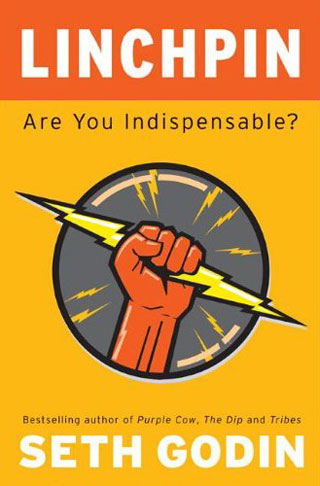Note to Readers: I thought we’d take a break from our normal posts to talk about a few recently released books and how they impact teaching and specifically my teaching philosophy. I want this to be an open discussion, so I have turned on the comments below. Alternatively you can email your thoughts to me at Nathan@sociologysource.com.
Recently I read two books that have changed my approach to teaching. The books Delivering Happiness by Tony Hsieh and Linchpin by Seth Godin
are not about teaching or education really. They are about giving your art to the world. Godin’s book begs you to silence the voice of resistance inside you that wants you to hide your art. Hsieh’s book wants you to see that your happiness lies within your art and within those you give your art to. For the first part of this two part series I will focus on what I learned from Godin’s Linchpin and how it has changed my game. On Friday in part 2 I will focus on how we can create a happier classroom and increase our educational outcomes in the process.

The world needs your art:
I consider teaching my art (as I am sure many of you do). I spend almost my entire waking life thinking about ways to make my classes better. It’s my passion and some close to me may say my obsession. I call it my art not because I think my classes are so amazing; I have had amazing classes and I have had mediocre classes. I believe teaching is art when you can make connections with another human being. It is art when students leave class a changed person. When you breakdown the complex and esoteric so that students can understand it in simple terms, it’s art. I have never made a masterpiece yet, but like anyone who considers themselves an artist, I will be chasing it for the rest of my life.
You are an artist. The world needs you to believe in your art. Then the world needs you to share it with as many people as possible. This is the central message of Godin’s Linchpin. I don’t need to tell the readers of this blog that teaching sociology can change lives and be the catalyst for social change in your community. What an amazing and imposing opportunity this is. Thank you for taking this challenge. I am sure you don’t hear this enough.
What should we be teaching in our classrooms?
The most directly relevant part of Godin’s book is his discussion of what should be taught in classrooms at every level. Godin argues that there are two types of classes (read more about it here):
Type 1. You can take a class where you learn technique, facts and procedures.
Type 2. You can take a class where you learn to see, learn to lead and learn to solve interesting problems.
After reading this I had to take stock of what I am doing in my classes. I was working really hard to open students eyes to the larger world around them, but I wasn’t teaching them to lead and I wouldn’t say the problems I was having them solve were… interesting. I still don’t have all, let alone some, of the answers. Today I am just posing the questions.
For example if, like me, you give close book multiple choice tests then what are you preparing your students for? Is there ever a scenario in day to day life where a person has access to a whole bunch of useful information for solving a problem, but then at the moment when it is most needed it is taken away? How do you solve problems in your life? I use Google, research, books, colleagues, and anything else I can find. If this is your reality too, then why don’t we test students differently?
Another problem with multiple choice tests are they tend to test lower order learning. Multiple choice is great for testing definitions, facts, names, and dates, but it’s really hard to write multiple choice questions that ask students to apply concepts or evaluate problems. It can be done, but it rarely is.
I tell my students that when they are being interviewed for their future jobs the main thing the HR staff will be trying to figure out is, can this applicant lead and solve interesting problems. I am using “interesting problems” in the broadest sense possible here. They will not assess if the student can memorize a whole bunch of facts, names, and dates and then mind dump it on paper. That passive form of learning is useless in the larger world.
Working within our constraints:
“But I teach classes of 100 or more students.” I feel ya, I do too. Which makes teaching leadership and creative problem solving all the more challenging. However all art is created within constraints. Virtuoso artists thrive under constraints. Shakespeare flourished underneath the very tight constraints of sonnets.
The trend in higher education is for classes to get larger and larger. We can either complain about it and reminisce on better days or we can work within our constraints and deliver our art. Given that I’m a long way from retirement, I vote for the latter.
So what do you think? How are you getting your students to learn to see, lead, and solve interesting problems? How are you overcoming your constraints? Please feel free to comment below or email me directly at Nathan@sociologysource.com.

Comments